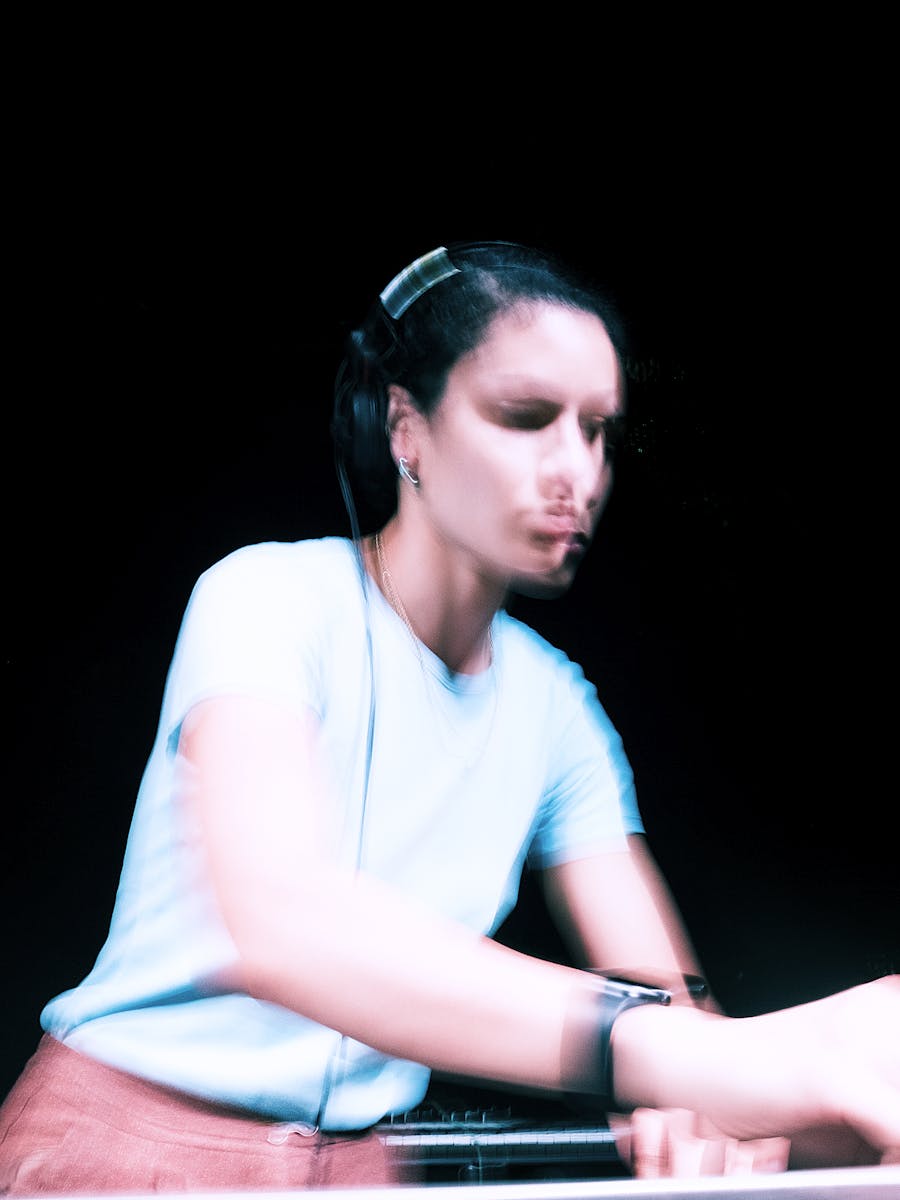Forty thousand years ago, in a cave in the Swabian Jura, in Germany, the first known avatar was sculpted: the Venus of Hohle Fels, an ivory figurine, six cm tall, representing a woman with oversized sexual organs. This Venus could well have been sculpted by a pregnant woman, to represent herself – such anyway is the hypothesis offered in 1996 by LeRoy McDermott, lecturer in History of Art at the University of Missouri. Although controversial, this theory is no less fascinating for it: tens of thousands of years before the information age, the virtual world of Second Life, Sims and digital art, humans were perhaps incarnating themselves in a different medium, projecting themselves into a different frame of references. They were creating avatars of themselves.
— Since time immemorial, a vector of power and an object of worship.
— From the start, this incarnation was proteiform but also often sequential. The word “avatar” has its Indo-European root in the ten अवतार “avatâra” of the Hindu god Vishnu, the successive and eponymous forms adopted by divinity. The teachings of each avatar – fish, turtle, wild boar, to Krishna, Buddha and Kalki – are graduated, and once they are fully understood by the devout Hindu, lead him to a clearer, more sophisticated understand of the world. From ancient times, avatars have given to the powerful the gift of ubiquity: from colossal statues of Egyptian Pharaohs to the marble sculptures of the emperor Augustus dispatched to all four corners of the Roman empire, these immobile incarnations allowed them to project their power to the most distant provinces, were themselves sometimes objects of worship and often received libations.
— Be they temporary incarnations of a divine presence, or veritable protagonists in a parable, avatars have an undeniable mystery and sacred charge. In the Jewish tradition of central Europe, one of the most fascinating avatars is without doubt the Golem: a “shapeless mass” of clay in human form animated by sacred inscriptions. The character of the Golem, silently defending his people, inspired, notably, Miloslav Dvorak’s sublime painting “Golem and Rabi Loew near Prague” (1951). In Psalm 139 of the Bible, Adam talks to God and says to him, “your eyes saw my unformed body.” Adam, symbolically the first human, can also be seen as the first golem. The last might have been created in 1963. GOLEM, one of the first Israeli computers, through analogue intelligence and by digital language, was not so far away from a clay creature brought into being by sacred letters.
— Nonetheless, it is in the world of art that the most powerful avatars have been deployed. Firstly, in the literature of antiquity: six hundred years before the publication of Ovid’s Metamorphosis, the Greek strategist Thucydides wrote one of the first works of history of that era – the History of the Peloponnesian Wars. In that book, he described Pericles (with great precision) as the emblem of Athenian greatness and in thus idealising him, created a kind of avatar inscribed in eternity. The history and the richness of this concept of “proteiform projection” is evident throughout art history. The work of numerous contemporary artists is intimately linked to this concept, especially since the 1970s.
— Voodoo dolls, body modification, starification: the contemporary artist becomes their own avatar.
— Fascinated by anthropomorphic representations such as voodoo idols and devotional dolls, Michel Nedjar began collecting rags in the Goutte D’or neighbourhood, which he put together with mud and blood. And these became the “Chairdâmes” dolls, which then became part of Jean Dubuffet’s art brut collection. In 1967, the Austrian artist, Waltraud Lehner decided to change her name to become a registered trademark “VALIE EXPORT” and released works such as the film Ping Pong, in which the viewer becomes an actor with a starring role in the work. In the same period, Cindy Sherman, ORLAN and Roman Opalka, amongst others, were developing their own notion of the avatar, this time using and transforming their own bodies to enter into a new aesthetic, and even activist dimension.
— The most widely known contemporary artists sometimes even become their own digital avatars via their presence on social media, and their recognisable aesthetic shared and studied across the whole world. This online presence can have a militant dimension. Vincent Kozsilovics and Nina Rodrigues-Ely, in an article of l’Observatoire de l’Art Contemporain, describe Ai Weiwei as “the artist-avatar” par excellence. “It is interesting to observe that the organization which has developed around Ai WeiWei integrates in a virtuoso fashion the mastery of all components from the real to the virtual, exhibition, logistics, communications and digital strategies bringing a viral dimension to each of his act, Twitter being his medium of choice.”
— These avatars of star artists have above all an aesthetic power, a bankable dimension and a strong marketing value which is of interest to the major fashion conglomerates. The collaborations between Louis Vuitton and Richard Prince, Yayoi Kusama and above all Takashi Murakami have no doubt amplified their impact, offering the artists a way of disseminating their aesthetic more broadly, in offering the brands a renewed intellectual and creative credibility. Nowadays, it is, doubtless within digital art that the avatar flourishes with the greatest conceptual richness, probably because it is explicitly invoked: a virtual character, on the other side of the digital mirror, acting as representation of a person IRL – In Real Life.
— The avatar : explorer of digital worlds.
— In 2004, the Pompidou Centre in Paris presented Female Interfaces, a series of important performances by Pia MYrvoLD, in which clothes permitted each dancer to create an avatar. They became the agents of the action, authorized to participate in its creation, by activating buttons and interactive panels on their clothes. In the same year, the Pompidou Centre made « Vigilance 1.0 » by Martin Le Chevallier part of its collection. This software transformed the visitor into an avatar who acts as an informant, able to transgress ethical boundaries, engaging the same question that the psychologist Stanley Milgram asked in his famous experiment in 1960.
— These days, the visitor is more and more integrated and implicated in the creation or the manipulation of digital avatars. For example, in 2017, Kazumasa Teshigawara, also known as Qubibi, exhibited at the Museum of Digital Art (MUDA) in Zürich a series of immersive and autobiographical installations which allowed the visitor to control the digital avatar of the artist, which metamorphosises, screams, and disintegrates at the visitor’s behest. A prolific artist in the digital field, at the start of the year at the Domaine de Trévarez, in the Finistère region, Miguel Chevalier also exhibited works that had begun in the 1980s: immersive digital installations, detailed, poetic, utopian landscapes which the visitor can explore and transform.
—The centaur: avatar of the future ?
— And tomorrow ? It is fascinating to see that the place of the avatar in digital arts is now evolving in exactly the same way as technology in our lives, for example Artificial Intelligence (AI). As Dr Daniela Rus, Professor of Electrical Engineering and Computer Science at MIT explains, the hybrid combination of AI’s analytic capacity and human creativity now allow for better results than could be obtained by humans or AI alone. This is the concept of the human “centaur”, augmented by AI, which maintains control of the real whilst liberating itself from thankless tasks.
— Digital artists have already grasped this and the frontier between the real and the virtual is becoming blurred, allowing us to imagine an encounter between humans and their avatars. Among the pioneers in this field has been the Quebecois artist Jon Rafman, who uses digital art to highlight the solitude and alienation that technology can bring about. He is known for his project “Kool Aid Man” in which his avatar moves through the virtual world of Second Life to stimulate the creative potential of other visitors. He has recently partnered with Balenciaga. During a show, Rafman immersed the brand’s guests in a disturbing, digital world, transforming them into avatars on the border between the real and the virtual. The real/digital boundary is absolutely erased by the artist Frederik Heyman, who uses photogrammetry in order to recreate an exact 3D copy of scenes. This is a process he has been using in partnership with the Rombaut brand since 2017, transforming the brand’s collaborators and photo models into digital characters in eroticized scenes.
— If this border disappears, will we all become centaurs, even cyborgs ? Perhaps we have to envisage such an outcome. Galileo, developing the first astronomic telescope, increased humans’ capacity to see different objects and discovered a new world, the moons of Jupiter. In fusing with our digital alter egos, in blurring the boundaries between dimensions, in allowing ourselves to go along with the poetic hypothesis of string theory, perhaps we will rediscover our own world ?
Translated into English by Sara & Emma Bielecki





